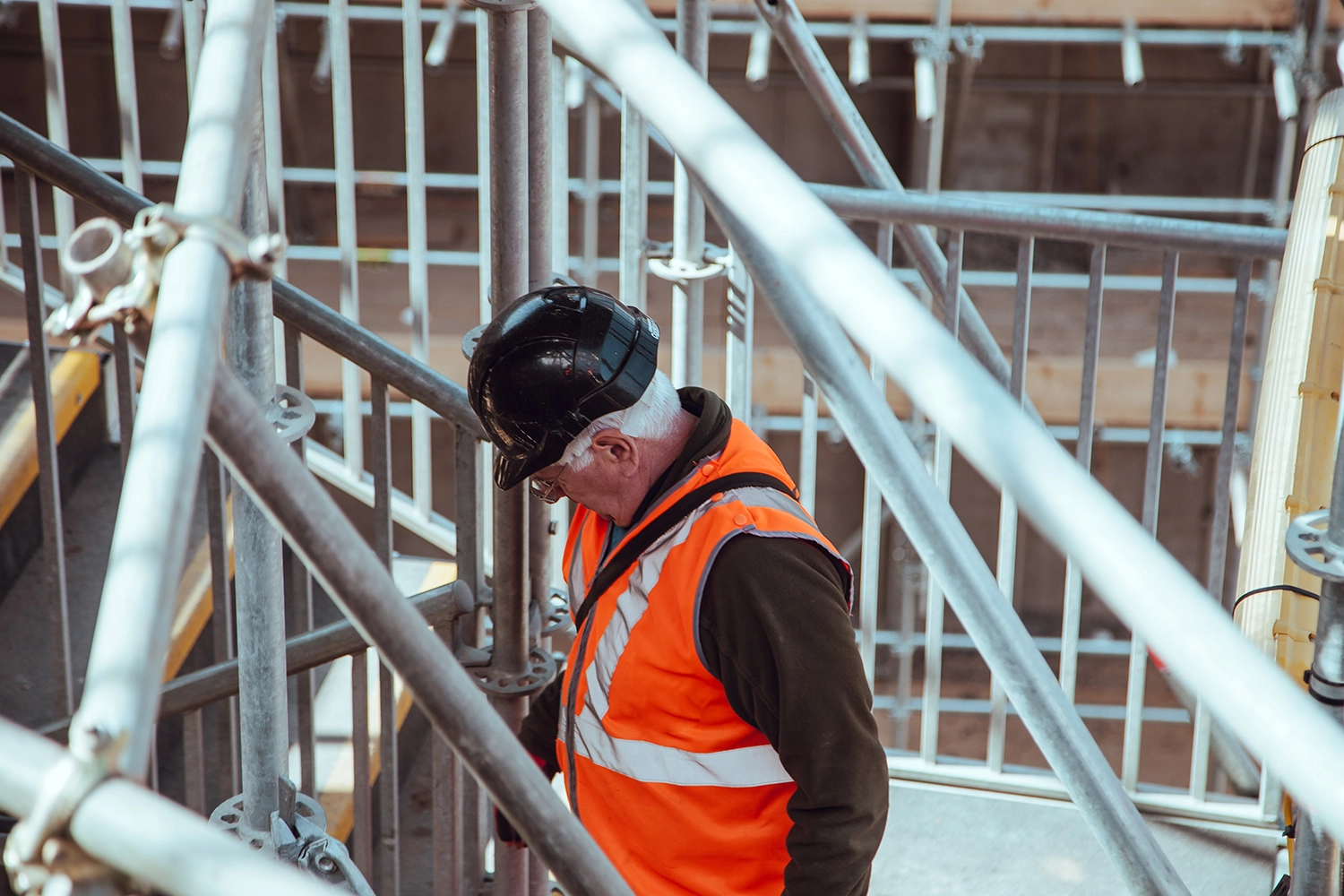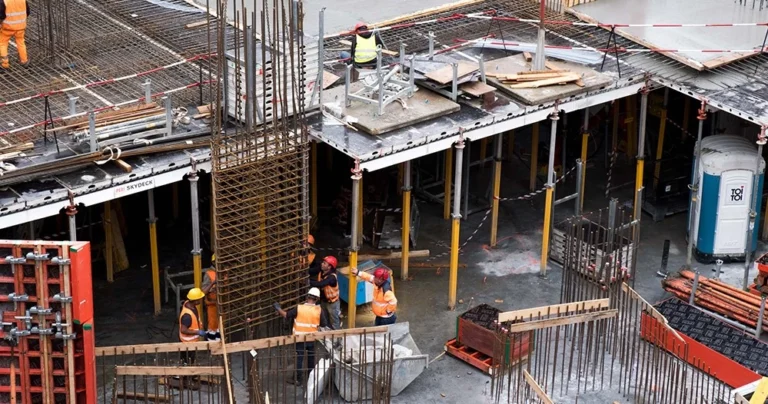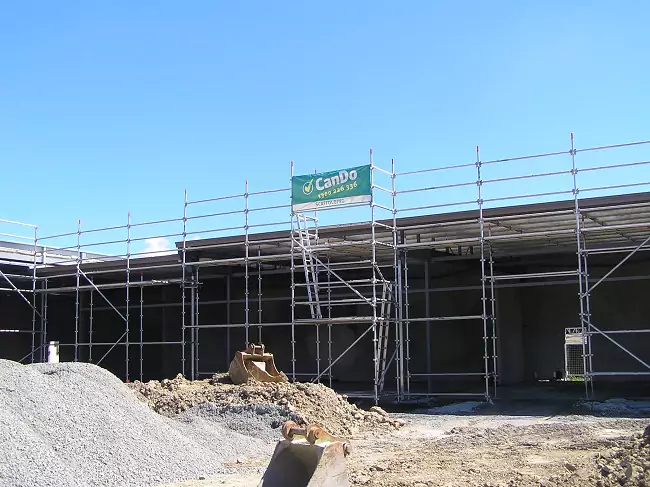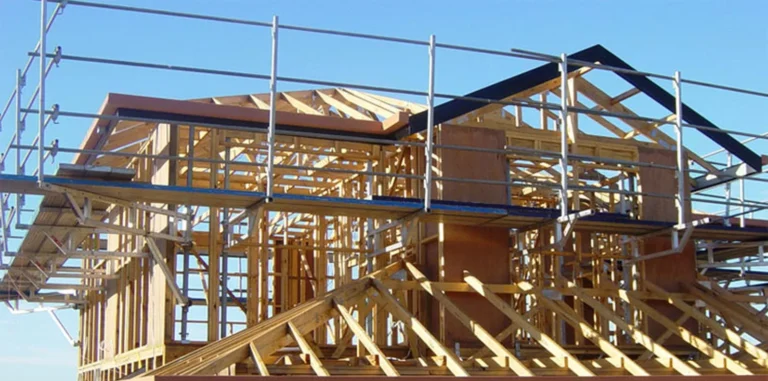Scaffolding Regulations You Need To Know
Introduction to Scaffolding Regulations in Australia
Scaffolding plays a crucial role in ensuring safety and efficiency in construction projects throughout Australia. Understanding and adhering to scaffolding regulations is essential for builders, homeowners, and anyone involved in construction or renovation projects. This article introduces the importance of scaffolding safety and an overview of the scaffolding regulations in Australia.
Importance of Scaffolding Safety
Safety should always be a top priority in any construction project, and scaffolding is no exception. Scaffolding provides a temporary structure that supports workers, tools, and materials at elevated heights. It is vital to ensure that scaffolding is designed, erected, and used correctly to prevent accidents and injuries.
Unsafe scaffolding can lead to falls, collapses, and other accidents that can result in serious injuries or even fatalities. By prioritising scaffolding safety, builders and homeowners can create a secure working environment and minimize the risk of accidents on their construction sites.

Overview of Scaffolding Regulations in Australia
In Australia, scaffolding regulations are governed by various legislative frameworks at both the national and state or territory levels. The primary legislation concerning scaffolding safety is the Work Health and Safety (WHS) Act and the accompanying WHS Regulations. These regulations provide a comprehensive framework for managing work health and safety in Australia.
Under the WHS Act and Regulations, there are specific requirements and responsibilities for duty holders involved in scaffolding activities. Duty holders include employers, principal contractors, self-employed individuals, and workers. Each party has a role to play in ensuring compliance with scaffolding regulations and promoting a safe working environment.
To gain a better understanding of scaffolding regulations in Australia, it’s crucial to explore topics such as scaffolding design and planning, erecting and dismantling procedures, inspections, and maintenance, as well as training and certification requirements. These aspects will be covered in detail in the subsequent sections of this article.
By familiarising themselves with the scaffolding regulations in Australia, builders and homeowners can ensure the safety of workers, protect themselves from potential legal and financial ramifications, and contribute to a culture of safety in the construction industry.
See the Qld Code of practice here
Understanding Work Health and Safety Laws
To ensure the safety of workers and the public, Australia has established comprehensive work health and safety (WHS) laws that govern various industries, including the scaffolding industry. Understanding these laws is crucial for anyone involved in scaffolding operations to ensure compliance and promote a safe working environment.
WHS Act and Regulations
The foundation of work health and safety in Australia is the Work Health and Safety Act (WHS Act) and its accompanying regulations. The WHS Act provides a framework for managing risks and ensuring the health and safety of workers and others affected by work activities. It sets out the legal responsibilities and obligations of duty holders, which include employers, self-employed individuals, employees, and other parties involved in scaffolding operations.
The WHS Act is supported by various regulations, such as the Work Health and Safety Regulations, which provide specific requirements and guidelines for different aspects of work health and safety. These regulations include provisions related to scaffolding, such as the design and construction of scaffolding structures, competency requirements for workers involved in scaffolding, and inspection and maintenance of scaffolding.
To ensure compliance with the WHS Act and regulations, duty holders must stay informed about the specific requirements applicable to scaffolding operations. This includes understanding the duties and responsibilities assigned to duty holders involved in scaffolding activities.
Duties and Responsibilities of Duty Holders
Under the WHS Act, duty holders have a legal responsibility to ensure the health and safety of workers and others affected by their work activities. The specific duties and responsibilities of duty holders involved in scaffolding operations may include:
- Employers: Employers have a primary duty of care to provide and maintain a safe work environment, including providing safe scaffolding systems and ensuring that workers are properly trained and competent to carry out their tasks safely. Employers must also consult with workers and their representatives regarding health and safety matters.
- Self-employed individuals: Self-employed individuals who conduct scaffolding operations are also duty holders under the WHS Act. They must ensure their own health and safety, as well as the health and safety of others who may be affected by their work activities. This includes complying with the relevant WHS regulations and implementing appropriate safety measures.
- Employees: Employees have a duty to take reasonable care for their own health and safety, as well as the health and safety of others. They must comply with any reasonable instruction given by their employer and cooperate with any policies or procedures in place to ensure a safe work environment.
- Designers, manufacturers, importers, and suppliers: Duty holders involved in the design, manufacture, import, or supply of scaffolding equipment have responsibilities to ensure that the equipment is safe and fit for its intended purpose. This includes providing clear instructions for safe use and maintenance of the equipment.
By understanding their duties and responsibilities as prescribed by the WHS Act and regulations, duty holders can contribute to a culture of safety and compliance within the scaffolding industry.
See more about scaffolding guidelines here

Scaffolding Design and Planning
When it comes to scaffolding, proper design and planning are essential to ensure safety and compliance with scaffolding regulations in Australia. This section will cover the key aspects of designing scaffolding structures and conducting thorough planning with risk assessment.
Designing Scaffolding Structures
Designing scaffolding structures requires careful consideration of various factors, including the intended use, load-bearing capacity, and site conditions. The design should be carried out by a competent person who has the necessary knowledge and experience in scaffolding design.
The design process involves determining the appropriate type of scaffolding system for the specific project, considering factors such as height, configuration, and access requirements. It is crucial to consult relevant scaffolding companies in Australia or scaffolding suppliers in Australia for guidance on suitable systems. The design should also account for any additional features, such as guardrails, toe boards, and access points, to ensure the safety of workers.
During the design phase, it is essential to consider the load-bearing capacity of the scaffolding structure. This includes calculating the maximum weight the scaffold can safely support, considering the weight of workers, tools, and materials. To comply with regulations, the design must adhere to Australian standards and guidelines, ensuring structural stability and integrity.
Planning and Risk Assessment
Thorough planning and risk assessment are crucial steps in ensuring the safety of scaffolding operations. Before erecting the scaffold, a comprehensive plan should be developed, considering factors such as site conditions, access routes, and potential hazards.
A risk assessment should be conducted to identify and evaluate potential risks associated with the use of scaffolding. This assessment helps determine the necessary control measures to mitigate these risks and ensure the safety of workers and others on the site. It is important to involve all relevant parties, including workers and supervisors, in the risk assessment process.
The planning phase should also consider the competence and training of workers involved in scaffolding operations. Adequate training, knowledge, and experience are essential for safe and effective scaffolding work. Scaffolders should have the necessary skills to erect, dismantle, and modify scaffolding structures, ensuring compliance with training requirements for scaffolders.
By prioritising proper design and planning, builders and homeowners can ensure that scaffolding structures are safe, compliant with regulations, and suitable for the intended use. Thorough design considerations and risk assessments contribute to a safe working environment, reducing the likelihood of accidents and injuries. See more about Height and Load Capacity here.
Erecting and Dismantling Scaffolding
When it comes to erecting and dismantling scaffolding, there are specific competency requirements and safe practices and procedures that must be followed to ensure the safety of workers and those in the vicinity.
Competency Requirements
Erecting and dismantling scaffolding requires a certain level of skill and knowledge. In Australia, individuals involved in these activities must possess the necessary competency to carry out the tasks safely and effectively. This includes having the appropriate training and experience to handle scaffolding equipment, understand the design and assembly process, and identify potential hazards.
Scaffolders should undergo training programs that cover topics such as scaffold erection, stability, fall protection, and load capacities. These programs may be provided by registered training organizations or industry associations. By completing the required training, scaffolders can demonstrate their competence and understanding of the relevant regulations and safety standards.
Safe Practices and Procedures
To ensure the safety of workers and prevent accidents, it is crucial to follow safe practices and procedures during the erection and dismantling of scaffolding. Some key considerations include:
- Planning: Before commencing the scaffolding process, a thorough plan should be developed. This plan should include a detailed assessment of the site, identification of potential hazards, and consideration of the required equipment and materials.
- Risk Assessment: A comprehensive risk assessment should be conducted to identify any potential risks associated with the scaffolding work. This assessment should consider factors such as the height of the scaffolding, the presence of overhead power lines, and the proximity to other structures.
- Stability and Support: Ensuring the stability and support of the scaffolding structure is crucial. Proper foundations and base plates should be used, and the scaffolding should be securely tied to the building or structure being worked on. Regular inspections should be conducted to identify any signs of instability or movement.
- Fall Protection: Adequate fall protection measures should be in place to prevent falls from heights. This may include the use of guardrails, toe boards, and personal protective equipment such as harnesses and lanyards. Workers should be trained in the proper use of fall protection equipment and systems.
- Communication: Effective communication among team members is essential during the erection and dismantling of scaffolding. Clear communication ensures that everyone understands their roles and responsibilities, and that potential hazards are communicated and addressed promptly.
By adhering to these competency requirements and following safe practices and procedures, the risks associated with erecting and dismantling scaffolding can be minimized. It is important to remember that scaffolding work should only be carried out by individuals who have the necessary training and experience
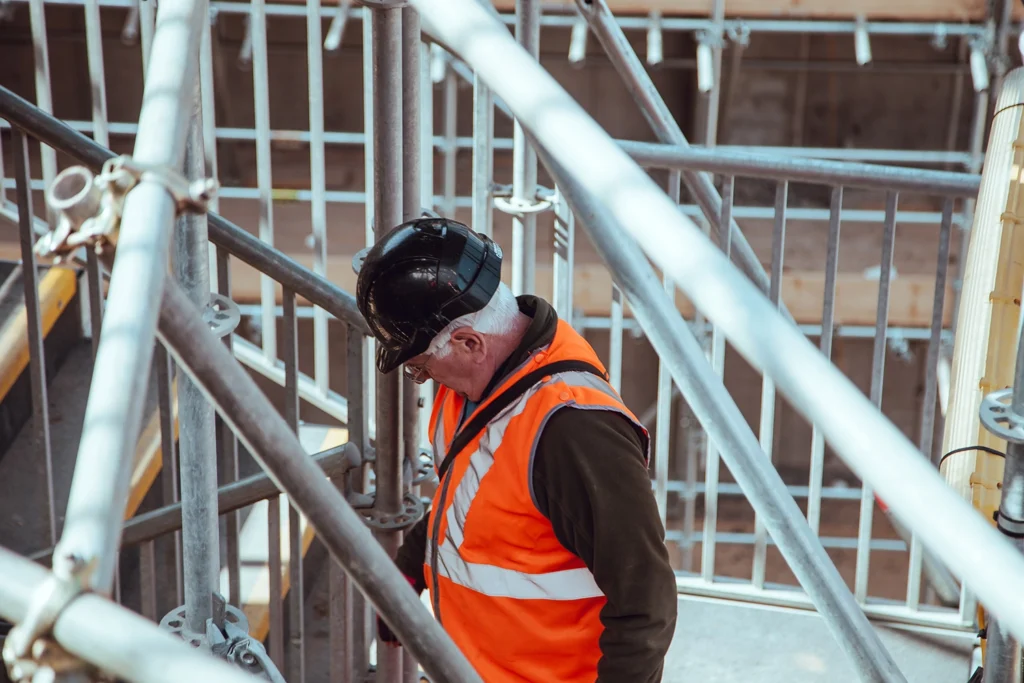
Inspections and Maintenance
To ensure the safety and integrity of scaffolding structures, regular inspections and maintenance are essential. These practices help detect any potential issues or damage, allowing for timely repairs and adjustments. Let’s take a closer look at the importance of regular inspections and the significance of maintenance and repairs.
Regular Inspections
Regular inspections of scaffolding are crucial to identify any signs of wear, damage, or structural instability. These inspections should be carried out by competent individuals who have the necessary knowledge and expertise in scaffolding safety. The frequency of inspections may vary depending on the duration and complexity of the project, but they should typically be conducted at least once every seven days.
During inspections, the scaffolding should be thoroughly examined to ensure compliance with the relevant scaffolding regulations in Australia. This includes checking the stability of the structure, the integrity of the components, and the overall safety of the scaffold. Any issues or defects should be promptly addressed to prevent accidents or injuries.
Maintenance and Repairs
Maintenance and repairs play a vital role in ensuring the ongoing safety and reliability of scaffolding. Regular maintenance should include cleaning, lubricating, and replacing worn-out or damaged components. It’s important to follow the manufacturer’s guidelines and recommendations for maintenance procedures.
If any defects or damage are identified during inspections, immediate repairs should be carried out by competent personnel. This may involve replacing damaged components, reinforcing weak areas, or adjusting the scaffold to ensure stability. It’s crucial to address these issues promptly to prevent further deterioration of the scaffold and to maintain a safe working environment.
By conducting regular inspections and implementing a proactive maintenance and repair program, the risks associated with scaffolding can be minimized. This not only ensures the safety of workers but also promotes compliance with the scaffolding regulations set forth in Australia.
Training Requirements for Scaffolders
To ensure the safe use of scaffolding in Australia, it is essential for scaffold workers to undergo proper training and obtain the necessary certifications. This section will outline the training requirements for scaffold workers and the importance of certification and licensing.
Scaffolders in Australia must undergo comprehensive training to develop the necessary skills and knowledge to perform their job safely and effectively. The training requirements for scaffolders may vary depending on the state or territory in which they operate. However, the following are some common training elements:
- Basic Scaffolding Training: This training covers the fundamental concepts and techniques related to scaffolding. It provides scaffold workers with an understanding of scaffold components, assembly, and dismantling procedures, as well as safety precautions.
- Intermediate and Advanced Scaffolding Training: Depending on the complexity of the scaffolding work, scaffolders may need to undergo intermediate or advanced training. These courses focus on more advanced scaffold designs, calculations, and planning, as well as specialized techniques for specific types of scaffolding.
- Working at Heights Training: Scaffolders are often required to work at heights, so it is crucial for them to receive training on working safely in elevated environments. This training includes instruction on fall protection systems, hazard identification, and emergency procedures.
- Construction Induction Training: Scaffolders must also complete a general construction induction training, commonly known as a “White Card.” This training provides an overview of work health and safety regulations and general construction site safety.
It is important for scaffolders to keep their training up to date and stay informed about any changes in regulations or industry best practices. Regular refresher courses can help scaffolders maintain their knowledge and skills.
Certification and Licensing
In addition to training, scaffolders in Australia are required to obtain specific certifications and licenses. The exact certification and licensing requirements may vary by state or territory, but the following are commonly required:
- High-Risk Work (HRW) License: Scaffolders who perform high-risk work, such as erecting or dismantling scaffolding more than four meters in height, are typically required to hold an HRW license. This license demonstrates that the individual has undergone the necessary training and assessment to carry out high-risk work safely.
- Scaffolding Certification: Some states or territories may require scaffolders to obtain certification specific to scaffolding. This certification verifies that the individual has the skills and knowledge to work with scaffolding systems safely.
Scaffolders should check the requirements specific to their state or territory to ensure compliance with the necessary certifications and licenses. Failure to obtain the required certifications and licenses can result in legal consequences and may invalidate insurance coverage.
By adhering to the training requirements and obtaining the appropriate certifications and licenses, scaffolders can contribute to a safer work environment and ensure compliance with scaffolding regulations in Australia.
Penalties for Non-Compliance
When it comes to scaffolding regulations in Australia, non-compliance can have serious consequences. It is essential for all individuals and companies involved in scaffolding operations to adhere to the relevant regulations to ensure the safety of workers and the public. Failure to comply with these regulations can result in severe consequences and legal and financial ramifications.
Consequences of Non-Compliance
Non-compliance with scaffolding regulations can lead to a range of negative outcomes. These consequences can include:
- Workplace accidents and injuries: Non-compliant scaffolding structures increase the risk of accidents and injuries for workers, passersby, and other individuals in the vicinity. Falls from heights, collapses, and scaffold failures are just a few examples of the potential hazards associated with non-compliant scaffolding.
- Damage to property: Improperly erected or maintained scaffolding can cause damage to surrounding properties, including buildings, vehicles, and infrastructure. This can result in costly repairs and legal disputes.
- Legal liabilities: Non-compliance with scaffolding regulations can lead to legal liabilities. In the event of accidents or injuries caused by non-compliant scaffolding, duty holders may face legal action, including lawsuits and fines.
- Reputational damage: Companies and individuals found to be non-compliant with scaffold regulations may suffer reputational damage. This can affect their relationships with clients, business partners, and the wider community.
Legal and Financial Ramifications
Scaffolding non-compliance can result in significant legal and financial ramifications. The specific penalties and fines for non-compliance vary depending on the state or territory in Australia. However, common penalties for non-compliance may include:
- Fines: Duty holders found to be non-compliant with scaffolding regulations can face substantial fines. The amount of the fine can vary depending on the severity of the non-compliance and any resulting harm or injury.
- Work orders and stop-work notices: Regulatory authorities have the power to issue work orders or stop-work notices when scaffolding is deemed to be non-compliant. These orders can require immediate rectification of the issues or halt work until the necessary compliance measures are implemented.
- Prosecution: In cases of serious non-compliance or when accidents or injuries occur, prosecution may be pursued. This can result in criminal charges and potentially imprisonment for individuals involved in the non-compliant scaffolding operations.
It is crucial to understand that compliance with scaffolding regulations is not only a legal requirement but also a moral obligation to prioritize the safety of workers and the public. By following the regulations and implementing safe scaffolding practices, individuals and companies can avoid the negative consequences and ensure a safer working environment.
Remember to consult with reputable scaffolding companies such as Cando Scaffold to ensure that your scaffolding is compliant and provides the necessary protection for workers and surrounding property

